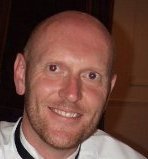How to start charging for your coaching – part one 1
One of the common questions asked by those at the start of their coaching journey is a variation of “How do I move from doing pro-bono/free coaching to charging?”
Before I go any further I invite you to consider why I selected the wording of that specific question. For example, one of the variations of that question is “how do you move from …”
I’d really like this post to be useful for you if you found yourself in this situation, not just an interesting piece of information. So before I go any further, let me ask you,
“What’s stopping you from charging for your coaching?”
There are many answers that could have come up for you to that question, each potentially with a different action that you can take. Below I’m going to discuss just a few of those answers.
Beliefs about the value of your coaching
These commonly are voiced as concerns about being good enough, questioning what a client would value about your work and why anyone would choose you etc.
I’ve written before about how to find the confidence to find clients to coach (Read “Finding the confidence to start coaching” for more specific actions you could take) I’ve also written “3 ways to keep your focus on your client and not your own inner critic/ thoughts” if those questions about your value distract you whilst coaching.
I’d certainly encourage anyone to continue to develop their own coaching skills and knowledge and add to that a plea to share that with others rather than keep it to yourself. If it’s beliefs about the value of your coaching, how will you know when you are good enough?
Beliefs around money
Your beliefs around money can be interwoven with your values and perceptions about the world. There are whole books written around the impact of money beliefs upon wealth and I’m certainly not going to try and sum them all up in such a short space.
What I will invite you to do is consider if your beliefs are getting in the way of you starting to charge for your coaching. If so, you have 3 principal options:
1. Find a way that your money beliefs and charging for your coaching can work together.
2. Change your beliefs
3. Do nothing
If you choose number 1, next week’s post may give you some more ideas. For now, what would have to happen for your money beliefs and charging for your coaching to work together?
Not knowing what to charge and how to have that conversation.
There are many ways to decide upon what you want to charge. I suggest that you consider the points I wrote about in the post “How much is your coaching worth?”
It’s not at all uncommon for someone to tell me that they don’t know what to say when talking to someone about charging for their coaching.
One of the pieces of advice I was given when I first started to charge for my coaching was to practice saying my fees in advance. “I charge x for my coaching” The idea is that you become so used to saying the amount that by the time you come to speak to a real client there is no shock, amazement or doubt heard in the tone of your voice.
Practicing that also means that you “ask and then shut up”. It’s not at all unknown for a coach to have talked themselves out of their own coaching fee without the client saying a word. This usually happens after the coach has done a really good job of communicating the value and their offer to a potential client. Yet they just keep talking to try and answer objections that haven’t been raised.
Fear of getting told no
There’s so much that could be written on this topic. For now I’ll ask the following, if you offer someone a cup of tea/coffee and they decline, what would you think?
I suspect you’d probably presume that they weren’t thirsty, perhaps didn’t want a hot drink or maybe didn’t like tea/coffee at all. Immediately interpreting that as meaning they think you are a terrible person etc is probably not high on your list of possible explanations.
Yet, when it comes to inviting someone to experience your coaching service many view a no as meaning something personal about you as an individual. There will be individuals who at this moment in time aren’t “thirsty” for coaching, others who want to try a different approach and some that have tried coaching before and didn’t like it.
I generally find that it is much easier to have a conversation to invite someone to experience your coaching service if you think of it as a service/product and not as selling yourself.
Just to add …
Next Wednesday, I will continue this in part two and discuss when to make a transition to start charging for your coaching.
What else would you add to the question what is stopping you from charging?
About the Author
 Jen Waller is on a mission to support, nurture and encourage coaching skills and talents from non-coach to coach and beyond.
Jen Waller is on a mission to support, nurture and encourage coaching skills and talents from non-coach to coach and beyond.
She has created a free 7 day e-course about how to create your own unique coaching welcome pack that works for you and your clients. Get your copy here.

 Andy lives and works in Brighton. He is an NLP trainer (Society of NLP), coach, hypnotherapist and meditation instructor with a particular interest in Hawaiian Huna and Yoga Nidra.
Andy lives and works in Brighton. He is an NLP trainer (Society of NLP), coach, hypnotherapist and meditation instructor with a particular interest in Hawaiian Huna and Yoga Nidra. With a career including 15 years in the strategic PR and communications, Jennifer knows a thing or two about promoting a personal brand – she did it every time she picked up the phone to a journalist. The result? She stood out from the ‘press office crowd’ and got her stories on the front page as well as national TV.
With a career including 15 years in the strategic PR and communications, Jennifer knows a thing or two about promoting a personal brand – she did it every time she picked up the phone to a journalist. The result? She stood out from the ‘press office crowd’ and got her stories on the front page as well as national TV.